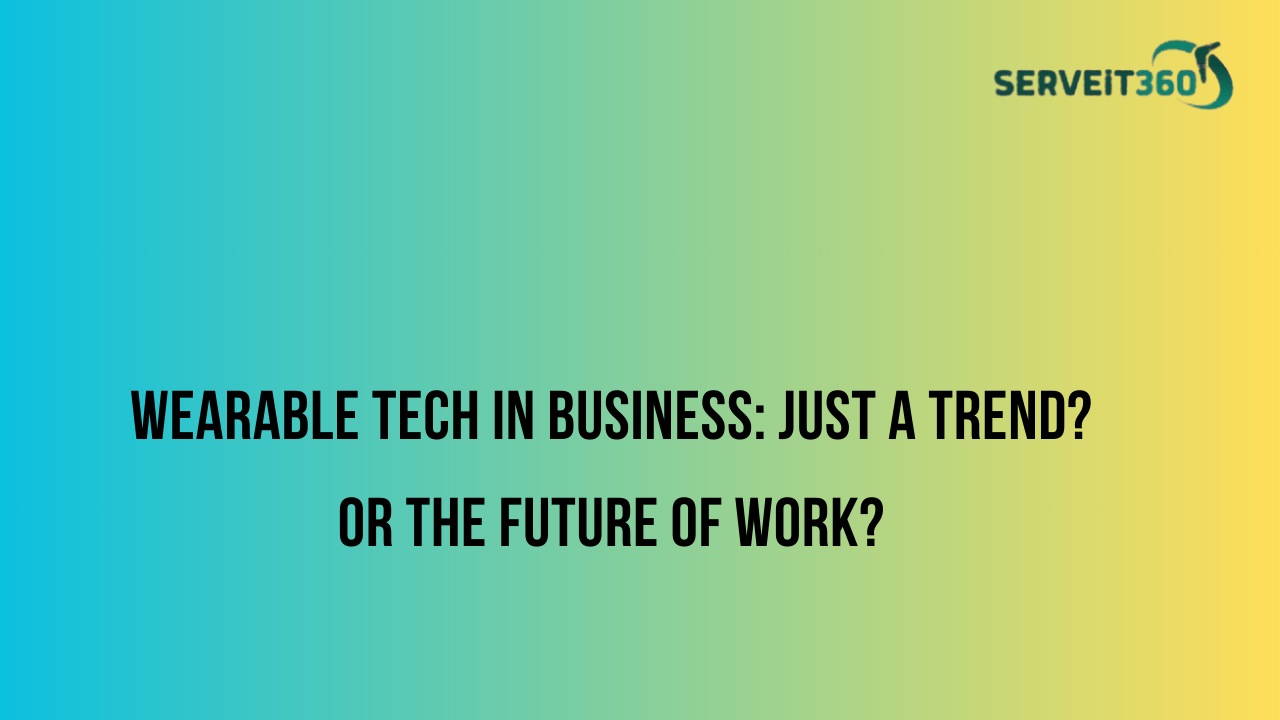when you hear “wearable tech,” your mind probably goes straight to fitness trackers or smartwatches that count your steps and ping you when your heart rate spikes after reading your inbox.
But what if I told you that wearables are quietly revolutionizing the way businesses operate—from how we train employees to how we monitor safety in high-risk environments?
Welcome to the future of work. And spoiler alert: it’s strapped to your wrist, head, or even woven into your shirt.
First Things First—What Is Wearable Technology?
Let’s keep it simple: wearable tech refers to electronic devices worn on the body that collect, transmit, or interact with data. Think:
- Smartwatches
- Smart glasses (like AR headsets)
- Fitness bands
- Smart clothing
- Body sensors
- Wearable ECG monitors
- Even exoskeletons (yep, Iron Man vibes)
These devices aren’t just cool—they’re smart. They connect to networks, sync with software, and can enhance decision-making in real-time. And businesses are paying attention.
Why Businesses Are Taking Wearables Seriously
Here’s the thing: as companies become more data-driven, the demand for real-time, hands-free, context-aware insights is exploding.
Wearables offer:
- Instant access to information
- Continuous tracking (health, location, efficiency)
- Augmented capabilities (like AR-assisted training)
- Seamless communication (without needing to whip out a phone or laptop)
Real-World Business Use Cases of Wearables
Let’s skip the fluff. Here’s how wearable tech is being used in the real world:
| Industry | Wearable Tech in Action |
|---|---|
| Healthcare | Remote patient monitoring with smartwatches and biosensors |
| Manufacturing | Smart helmets and glasses for hands-free instructions and safety alerts |
| Logistics | Smart gloves for faster barcode scanning and inventory management |
| Field Service | AR headsets for remote support and training |
| Retail | Wearables for real-time task management and customer service improvements |
| Corporate Wellness | Fitness trackers to promote employee health and reduce insurance costs |
| Aviation | Smart glasses for maintenance documentation and checklist navigation |
Smart Tech Meets Human Efficiency: The Productivity Equation
Let’s talk numbers. When wearables are implemented strategically, here’s what businesses have seen:
| Business Function | Average Efficiency Boost |
|---|---|
| Order Picking (Logistics) | +25% |
| Employee Training (AR) | +30–40% faster onboarding |
| Field Repairs | -50% downtime with remote AR |
| Wellness & Absenteeism | -20% sick days annually |
Enter the Smart Office: Where Wearables Meet Workflows
Let’s imagine the future of a wearable-powered workplace:
- Sarah, a customer support agent, wears a smart badge that monitors her stress levels. When it spikes, her manager is notified, and she’s offered a short wellness break.
- James, a warehouse worker, wears a smart glove that auto-scans products as he lifts them, cutting his task time in half.
- Lisa, a remote engineer, uses AR glasses to collaborate live with a specialist who guides her repairs in real time from another country.
We’re not talking sci-fi anymore. This is happening. And fast.
Are Enterprises Really Buying In?
Absolutely.
Here’s a quick snapshot of what major companies are doing:
- UPS tested smart glasses to speed up package sorting.
- GE used AR headsets in turbine assembly, cutting errors by 46%.
- Virgin Atlantic explored smartwatches to deliver personalized service to premium passengers.
- BP and Chevron equipped field workers with wearables for environmental monitoring and safety alerts.
But Let’s Be Honest—There Are Hurdles
Before you buy your team a bunch of smartwatches and say “Go wild,” let’s talk about the not-so-glamorous side:
- Privacy concerns: Tracking employee health or movements must be handled transparently and ethically.
- Battery life: Many wearables can’t last a full shift.
- Integration headaches: New tech = more systems to sync with legacy infrastructure.
- Adoption resistance: Not everyone wants to wear a computer on their body, and let’s face it—not all wearables look cool.
To succeed, you need a clear purpose, employee buy-in, and strong policies around data use and ownership.
Quick Tech Breakdown: Most Popular Business Wearables
| Type | Top Use Cases | Notable Brands |
|---|---|---|
| Smartwatches | Employee wellness, notifications, time tracking | Apple Watch, Samsung Galaxy Watch |
| Smart Glasses / AR | Remote support, real-time data overlay | Microsoft HoloLens, Vuzix, RealWear |
| Smart Clothing | Posture correction, biometric feedback | Hexoskin, Athos |
| Smart Gloves | Barcode scanning, gesture control | ProGlove, HaptX |
| Biosensors | Fatigue, stress, ECG, temperature | Whoop, BioStrap, Empatica |
The Bigger Picture: Wearables and the Rise of Human Augmentation
Let’s zoom out for a second.
We’re entering an era of human augmentation—where technology isn’t just something we use, but something we wear, feel, and integrate into our daily lives.
This isn’t about replacing people with machines. It’s about augmenting their capabilities, helping them make better decisions, stay safe, and perform at higher levels.
Imagine:
- Factory workers who never miss a step.
- Healthcare staff who detect patient risk before symptoms appear.
- Technicians who never feel alone, even in remote locations.
This is what wearable tech promises. It’s not just about gadgets. It’s about people-powered by technology.
Wrapping It Up: Wearables Are Here to Work
We started this chat talking about step counters and smartwatches—but we’ve ended up looking at how wearable tech is quietly becoming a cornerstone of the modern workplace.
From logistics and healthcare to retail and manufacturing, wearables are transforming how we work, train, and protect our teams.
So next time you think of wearables as just fitness toys, remember this: they might just be your business’s next big upgrade.


